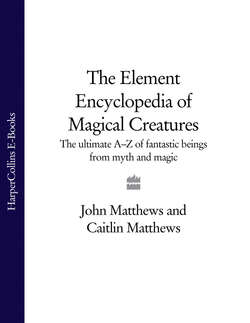Читать книгу The Element Encyclopedia of Magical Creatures: The Ultimate A–Z of Fantastic Beings from Myth and Magic - John Matthews - Страница 196
BAROMETZ
ОглавлениеIn medieval Europe, the Barometz was thought to be a kind of animal-vegetable being, a native of far eastern parts. Sir John Mandeville’s Travels described it like this:
There grows a kind of fruit like gourds; when they are ripe, men cut them into two and find within them a little beast with flesh, bone and blood, like a new-born lamb without wool.
Legend held that the Barometz was a beast with long roots that allows it to graze in its immediate vicinity, but when its pasture was exhausted, it would die. Then the Barometz would be scavenged by wolves or harvested by men. It was said to taste like crab meat. The fleece was used to weave clothing and its hooves, which were made of hair, could also be woven. Sir Thomas Brown, in his Pseudodoxia Epidemica of 1646, wrote that:
Much wonder is made of the Boramex, that strange plant-animal…which wolves delight to feed on, which hath the shape of a Lamb, affordeth a bloody juyce upon breaking and liveth while the plant be consumed about it.
Other names of the Barometz are Chinese Lycopodium, Jeduah, Scythian Lamb and Vegetable Lamb of Tartary. Various suggestions have been made about the Barometz’s possible origins: some say it may have been a description of the cotton-plant or the woolly fern (Cibotium barometz) that grows in the Middle East and has been used to stop bleeding. Or it is possible that the legends are based on the then little-understood formation of the mineral travertine which is built up by calcium carbonate deposited through the flow of thermal waters over plant matter. As these deposits build up, so the branch or bush is slowly turned into living stone.
